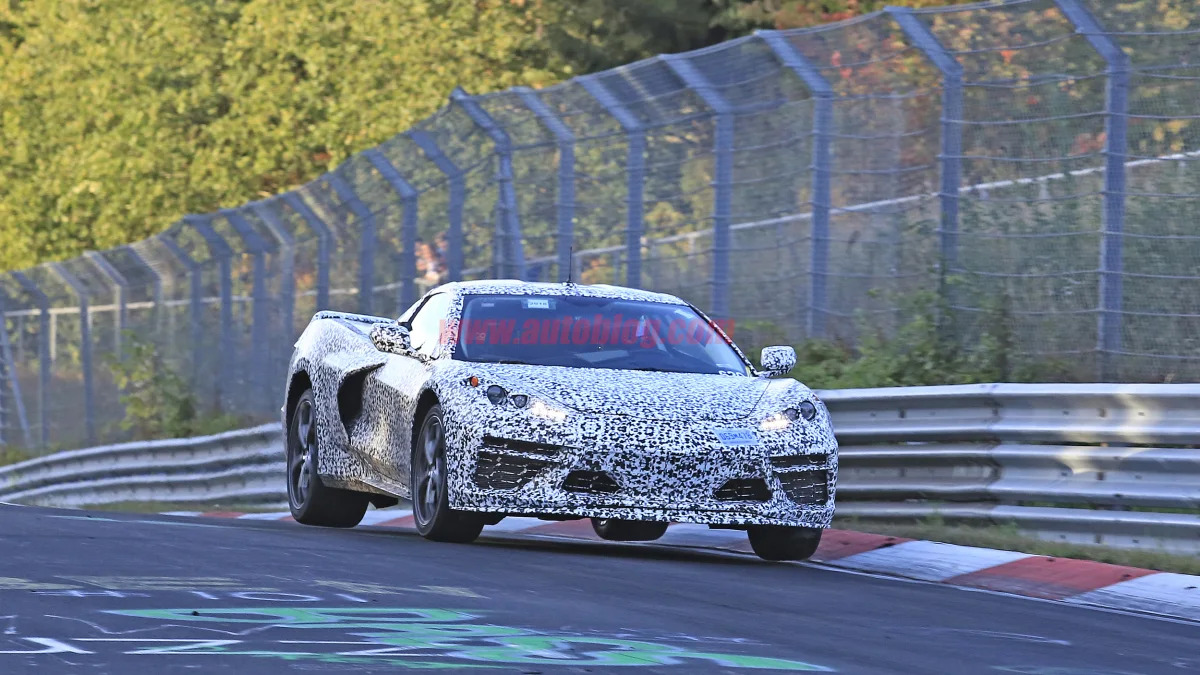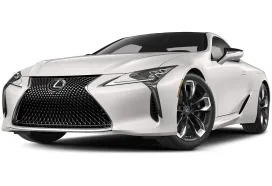For anyone who still hadn't noticed the elephant in the room, it should be clear by now that the mid-engine Chevrolet Corvette won't debut at the Detroit Auto Show. And if sources for GM Authority are correct, we won't see the America's most mythical automotive unicorn for at least six months. The site said "sources familiar with the matter" disclosed "a major electrical issue" with the prototype sports car. Supposedly, the electrical system can't handle the required loads, so engineers need to redesign all the wiring. GMA says this means a six-month delay.
Sources for two other sites corroborated electrical bugbears. Jalopnik's inside line said Corvette engineers used a General Motors parts bin wiring harness and electrics, and have found that the basic fare won't hold up to modern needs. The Corvette Blogger summed up its mole as saying that electric snafus "appear to be true and have been ongoing." That site, however, said the delay wouldn't necessarily be six months, but could be from two to six months.
Whatever's happening behind the scenes at Corvette, we can't fault Chevrolet for any so-called delay. Yet. First, we were never promised a Detroit reveal, so the word "delay" could be disingenuous. Second, this is what prototype testing is for — to draw out problems so they can be solved by engineers instead of dealers and customers. Third, the mid-engine coupe's actual gestation period hasn't been anything near as long as we've seen with other sports cars this century — fifth-gen Camaro and Lexus LFA for instance, anyone? Fourth, we've been waiting on a mid-engine Corvette since Zora Arkus-Duntov's 1959 Chevrolet Engineering Research Vehicle. Six months won't hurt. Just get the car right. And there's precedent: The new-generation 1984 Corvette was meant to debut in 1983, but production issues delayed the launch.
The six-month timeframe comes from the fact that engineers will need to work with suppliers on all the pieces necessary to bolster the system. But since we don't know what's actually happening, we should be prepared for anything at any time.
That being said, we're free to take wild swings at the cause. There's excessive draw, but from where? It could be an issue as simple as a broken correlation between digital models and the real world. As a random commenter noted concerning GM sticking its hands in a mid-engine bay, "The Fiero was a long time ago." Some think the active aero might be the culprit. That feels too simple, like it would have been caught much earlier, yet we didn't see the Corvette hit tracks like the Nürburgring and Sebring until after summer. One of the most interesting theories is that it's not the Corvette that's the problem, but a hybrid, mid-engine Cadillac version that's mucking things up. We're still wondering what's the deal with that Cadillac key fob, remember.
According to outside timelines, the C7 Corvette is expected to end production in Bowling Green, Kentucky, in summer 2019 to make way for C8 production in the fall. Until then, get ready to do the wave for the Cadillac CT6 in Detroit.
Related Video:
Sources for two other sites corroborated electrical bugbears. Jalopnik's inside line said Corvette engineers used a General Motors parts bin wiring harness and electrics, and have found that the basic fare won't hold up to modern needs. The Corvette Blogger summed up its mole as saying that electric snafus "appear to be true and have been ongoing." That site, however, said the delay wouldn't necessarily be six months, but could be from two to six months.
Whatever's happening behind the scenes at Corvette, we can't fault Chevrolet for any so-called delay. Yet. First, we were never promised a Detroit reveal, so the word "delay" could be disingenuous. Second, this is what prototype testing is for — to draw out problems so they can be solved by engineers instead of dealers and customers. Third, the mid-engine coupe's actual gestation period hasn't been anything near as long as we've seen with other sports cars this century — fifth-gen Camaro and Lexus LFA for instance, anyone? Fourth, we've been waiting on a mid-engine Corvette since Zora Arkus-Duntov's 1959 Chevrolet Engineering Research Vehicle. Six months won't hurt. Just get the car right. And there's precedent: The new-generation 1984 Corvette was meant to debut in 1983, but production issues delayed the launch.
The six-month timeframe comes from the fact that engineers will need to work with suppliers on all the pieces necessary to bolster the system. But since we don't know what's actually happening, we should be prepared for anything at any time.
That being said, we're free to take wild swings at the cause. There's excessive draw, but from where? It could be an issue as simple as a broken correlation between digital models and the real world. As a random commenter noted concerning GM sticking its hands in a mid-engine bay, "The Fiero was a long time ago." Some think the active aero might be the culprit. That feels too simple, like it would have been caught much earlier, yet we didn't see the Corvette hit tracks like the Nürburgring and Sebring until after summer. One of the most interesting theories is that it's not the Corvette that's the problem, but a hybrid, mid-engine Cadillac version that's mucking things up. We're still wondering what's the deal with that Cadillac key fob, remember.
According to outside timelines, the C7 Corvette is expected to end production in Bowling Green, Kentucky, in summer 2019 to make way for C8 production in the fall. Until then, get ready to do the wave for the Cadillac CT6 in Detroit.
Related Video:













Sign in to post
Please sign in to leave a comment.
Continue